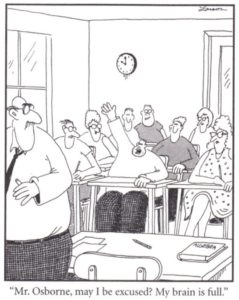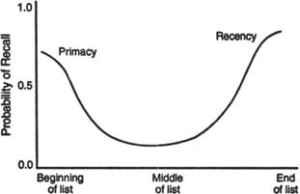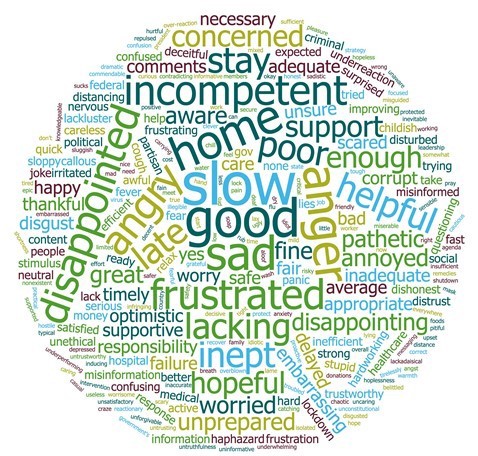The question we’ve been asked the most by clients the past few months is:…
Teach Your Jurors Well
 Your most important job as a trial attorney is to arm jurors with the arguments and facts you want them to deploy during deliberations. You must not only make allies in the jury box, but supply them with what they need to make your case to fellow jurors. They must believe your arguments, succinctly repeat them in the jury room, and repeat your key facts in support.
Your most important job as a trial attorney is to arm jurors with the arguments and facts you want them to deploy during deliberations. You must not only make allies in the jury box, but supply them with what they need to make your case to fellow jurors. They must believe your arguments, succinctly repeat them in the jury room, and repeat your key facts in support.
Lawyers are rarely more credible to a jury than when they are teaching them something. When jurors see a lawyer as a teacher, they are less likely to see them as an advocate; they are more likely to see them as someone helping them to understand and learn rather than as someone telling half-truths to sway them to their side. These teaching moments are chances to build rapport and to teach the jury to internalize your key facts and themes on your own terms.
These goals are immeasurably bolstered when the attorney is not only an educator, but an effective educator. For jurors to learn something they need to be taught well, and to teach them well you need to utilize methods shown to best enhance jurors’ retention and understanding.
Improvements in educational neuroscience and a systematic approach to researching learning reveal what teaching approaches are most effective, and which ought to be relegated to the dustbin. During my time as a teaching consultant at the University of Michigan’s Center for Research on Learning and Teaching I helped dozens of instructors incorporate more modern techniques, and to improve their teaching styles and pedagogical approaches. As a trial consultant, I find that many of these same techniques prove invaluable in the courtroom.
Here are four best teaching practices that lawyers can use in the courtroom to persuade jurors more effectively.
Give the Jury a Structure with which to Make Sense and Meaning of the Case
Lawyers tend to build their case themes through abductive reasoning, arriving at broad themes and conclusions from facts and observations. That is to say the case narrative is arrived through the careful examination of all the facts and arguments that end up comprising it. This is not, however, how lawyers should expect a jury to process, interpret, and internalize that same information.
Sousa notes that retention and understanding are at their highest when both “sense” and “meaning” are present. (48-50) “Sense” means a juror can understand the information on the basis of his or her experience; “meaning” refers to whether or not a juror has a reason to assimilate and remember the information.
Creation of meaning has a far greater impact on retention than sense alone. People understand and remember information far better when it fits into a structure or narrative they already comprehend. That pre-existing narrative is itself a reason for someone to remember something.
How should this affect your trial presentation? If you want to enhance the probability that a juror will remember an important theory, argument, or fact, you should ensure it can fit into a story or a structure they already know or have. By the time a juror first hears a key piece of evidence or a key argument, they should already know what your theme or story of the case is. Every piece of evidence, and every argument, should fit into a story of the case you have already made clear to them.
Consider the following alternatives:
- “I’m going to tell you about an item. It’s red, and mostly leather. Part of it is tall and thin, it has two asymmetrical straps, and is very uncomfortable. It’s a high heeled shoe.”
- “I’m going to tell you about a high-heeled shoe. It is red, and mostly leather. It has a tall, thin heel, and two asymmetrical straps. It is very uncomfortable.”
In the second example, you were already picturing a shoe when I gave you details about it. Red, leather, and straps all added specificity to a picture you already had. In the first example, however, you likely had absolutely no idea what I was talking about by the time I told you it’s a shoe.
Crucially, jurors will be far, far more likely to remember the details given in the second example than the first, even though they are the same details, because when they learned the details they fit into a story they already understood.
Making sure your jury knows your story of gives them a way to process, understand, and remember all the subsequent information they receive. If they don’t know what to do with a new fact or argument, or know where it goes (so to speak), they are far less likely to understand or remember it.
Time Your Most Important Arguments to Help Jurors Remember Them
Teachers often waste their most valuable time in the classroom. In a standard one-hour class, the first ten minutes and the last ten minutes boast the highest retention rates for students, but teachers far too  often spend those minutes reviewing attendance, listing future assignments, or taking care of various housekeeping tasks.
often spend those minutes reviewing attendance, listing future assignments, or taking care of various housekeeping tasks.
There is some evidence that so-called “primacy-recency” is a broader phenomenon. Experiments show that given a list of ten items, people are most likely to remember the first few and the last few. In short, we tend to remember things that happen early in a particular sequence, and towards the end of a particular sequence.
For longer classes, we suggested teachers break the class into distinct sections, either with a break or with a dramatic change in activity. Research shows that you can maximize retention times this way as well; students remembered the beginning and end of each segment, not simply the class overall.
 I called the practice “signposting.” You scatter markers throughout the class, whether an activity change, a topic change, a break, or even a joke. Students are more likely to remember things that happen right before or after a signpost than they are things between them. It’s actually quite intuitive, given every day experiences. How often do you try to get somebody to remember something by saying “It was right before we got to the supermarket,” or “it was right after you told that joke?”
I called the practice “signposting.” You scatter markers throughout the class, whether an activity change, a topic change, a break, or even a joke. Students are more likely to remember things that happen right before or after a signpost than they are things between them. It’s actually quite intuitive, given every day experiences. How often do you try to get somebody to remember something by saying “It was right before we got to the supermarket,” or “it was right after you told that joke?”
As a trial attorney, this means you can use the natural breaks in action during a day in court to your advantage. Always remember that jurors are most likely to retain what you say in the ten or fifteen minutes after a break, or after a new witness takes the stand, or when you begin your opening, as well as during the ten or so minutes before a break, the end of a witness’ testimony, or the end of the day. As much as you can, put the facts and arguments you most want jurors to remember in these high retention periods. And, to the extent possible, avoid long stretches of testimony or argument without a signpost.
Use Repetition to Reinforce Your Key Points
Good orators, whether teachers, politicians, lawyers, or whatever, know that repetition is crucial. “We shall fight on the seas and oceans… we shall fight on the beaches, we shall fight on the landing grounds, we shall fight in the fields and in the streets, we shall fight in the hills.” Lincoln used variations on the word “dedicate” six times in the 250 or so words of the Gettysburg Address, including twice in two sentences:
“We have come to dedicate a portion of that field, as a final resting place for those who here gave their lives that that nation might live. It is altogether fitting and proper that we should do this. But, in a larger sense, we cannot dedicate, we cannot consecrate, we cannot hallow this ground.”
Note that Lincoln repeats both words and cadence (“we cannot…”). But this is more than simply an effective rhetorical tool. Anyone who has spent time in a religious school – or who simply learned times tables – knows that repetition is a powerful educational tool. The science behind it is clear; each time we hear something repeated, the neural pathways that make up that memory fire and are reinforced. Repeating your key facts, especially in the context of repeating your best arguments, will reinforce those memories in jurors’ minds and make it far easier for them to repeat them on your behalf during deliberations.
Know the Relationship Between Your Jury and Your Story
Being a teacher for your jury might not seem especially related to the process of selecting that jury, but the two are in fact deeply intertwined. Recall that people internalize and remember information better if it makes sense given their life experiences and fits into a framework they already understand.
This means that whatever history, memory, and self-concepts jurors enter the courtroom with will affect the ways that they process and recall what they learn during trial. People with different backgrounds and senses-of-self may draw wildly different conclusions from the same piece of information. For some, the defendant’s blood at the scene may be dispositive evidence, but as the recent revisits to the OJ Simpson trial remind us, for jurors inclined from the outset to be suspicious of police it can be evidence of an attempt to frame an innocent man.
Sometimes these connections are not obvious or intuitive, and it is in those situations that jury research can play a critical role. Putting the time and effort into your case early can help you determine not only which stories of the case are most compelling and which evidence the most convincing, but the types of people who, by virtue of their background and experience are most likely to be compelled or repelled by the story you are trying to tell.
Even after the jury is empaneled, it pays to be mindful of its composition as your strategize how best to present your case. A panel more or less educated that you had predicted, for instance, might cause you to alter how you pitch your arguments. An unexpected modal background might suggest presenting facts in a way to better speak to the jurors’ existing life experiences and self-images.
Effective teachers know that using examples relevant to students’ lives enhances the probability that the lesson will stick, and often change their approach to meet students on their own turf, as it were. Trial attorneys, too, can tailor their arguments to their jury to make the most of their likely perceptions and their retention. A good attorney, like a good teacher, adopts themes of least resistance to his or her audience, rather than sticking with conventional, one-size fits all approaches.



